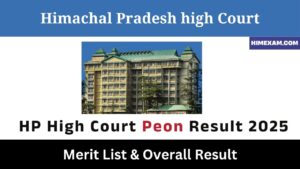Table of Contents
ToggleIndian Polity & Constitution Question Answer Set-2
||Indian Polity & Constitution Question Answer Set-2||Indian Polity & Constitution MCQ Set-2||
11. Who was the Constitutional Advisor to the Constituent Assembly of India ?
(A) Dr. Rajendra Prasad
(B) Dr. B. R. Ambedkar
(C) Sir B.N. Rao
(D) Shri K.M. Munshi
Explanation:-Benegal Narsing Rau was an Indian bureaucrat, jurist, diplomat and statesman known for his key role in drafting the Constitution of India. He was also India’s representative to the United Nations Security Council from 1950 to 1952. B.N. Rau was appointed as the Constitutional Adviser to the Constituent Assembly in formulating the Indian Constitution. He was responsible for the general structure of the its democratic framework of the Constitution and prepared its original draft. The President of the Constituent Assembly Dr. Rajendra Prasad, before signing the Constitution on 26 November, 1949, thanked Rau for having ‘worked honorarily all the time that he was here, assisting the assembly not only with his knowledge and erudition but also enabled the other members to perform their duties with thoroughness and intelligence by supplying them with the material on which they could work.’
12. Which of the following countries has introduced “direct democracy”?
(A) Russia
(B) India
(C) France
(D) Switzerland
Explanation:-Direct democracy is a form of democracy in which people vote on policy initiatives directly, as opposed to a representative democracy in which people vote for representatives who then vote on policy initiatives. Many countries that are representative democracies allow for three forms of political action that provide limited direct democracy: referendum (plebiscite), initiative, and recall. Referendums can include the ability to hold a binding vote on whether a given law should be rejected. This effectively grants the populace which holds suffrage a veto on a law adopted by the elected legislature (one nation to use this system is Switzerland).
13. Who was the President of the Republic of India who consistently described Indian Secularism as ‘Sarva Dharma Samabhav’?
(A) Dr. S. Radhakrishnan
(B) Dr. Zakir Hussain
(C) Dr. Rajendra Prasad
(D) Gaini Zail Singh
Explanation:-The slogan “Sarva Dharma Sama Bhava” was coined by Mahatma Gandhi in pursuit of his dream of HinduMuslim unity. Dr. S. Radhakrishnan was the President of the Republic of India who consistently described Indian Secularism as ‘Sarva Dharma Samabhav’
14. Which of the following countries have an Unwritten Constitution?
(A) U.S.A
(B) U.K.
(C) Pakistan
(D) India
Explanation:-An uncodified or unwritten constitution is a type of constitution where the fundamental rules of government take the form of customs, usage, precedent and a variety of statutes and legal instruments. Current example of such a constitution is United Kingdom of Great Britain and Northern Ireland where there is no defining document that can be termed “the constitution”. Because the political system evolved over time, rather than being changed suddenly in an event such as a revolution, it is continuously being defined by acts of Parliament and decisions of the Law Courts
15. The Constitution of India was adopted on
(A) 26 January, 1950
(B) 26 January, 1949
(C) 26 November, 1949
(D) 31 December, 1949
Explanation:-The Constitution was enacted/adopted by the Constituent Assembly on 26 November 1949, and came into effect on 26 January 1950. The date 26 January was chosen to commemorate the Purna Swaraj declaration of independence of 1930. With its adoption, the Union of India officially became the modern and contemporary Republic of India and it replaced the Government of India Act 1935 as the country’s fundamental governing document.
16. Which of the following is a feature to both the Indian Federation and the American Federation ?
(A) A single citizenship
(B) Dual judiciary
(C) Three Lists in the Constitution
(D) A Federal Supreme Court to interpret the Constitution
Explanation:-According to the Constitution of India, the role of the Supreme Court is that of a federal court and guardian of the Constitution. The Federal Court of India was a judicial body, established in India in 1937 under the provisions of the Government of India Act 1935, with original, appellate and advisory jurisdiction. It functioned until 1950, when the Supreme Court of India was established.
17. The constitution of India describes India as
(A) A Union of States
(B) Quasi-federal
(C) A federation of state and union territories
(D) A Unitary State
Explanation:-Article 1 of the Constitution declares that India, that is Bharat, shall be a Union of States.
18. Who among the following was the President of the Constituent Assembly of India ?
(A) Dr. Rajendra Prasad
(B) Jawaharlal Nehru
(C) M.A. Jinnah
(D) Lal Bahadur Shastri
Explanation:-Dr. Rajendra Prasad was elected the President of Constituent Assembly on 11 December, 1946. On January 26, 1950, the Constitution of independent India was ratified and Dr. Rajendra Prasad was elected the nation’s first President. He served as the President of constituent assembly.
19. The convention that “once a speaker always a speaker” is followed in
(A) UK
(B) USA
(C) France
(D) India
Explanation:-The British Speaker is elected at the beginning of the Parliament by and from among the members of the House of Commons. If the Speaker of outgoing Parliament is still a member of the house and is willing to be re-elected, he can do so. usually, he is reelected as many times as he wants. A change of party does not make any difference. He is elected unanimously by the house. So in Great Britain there goes a saying, “Once a speaker always a speaker.”
20. Indian Penal Code came into operation in
(A) 1858
(B) 1860
(C) 1859
(D) 1862
Explanation:-
Indian Penal Code is the main criminal code of India. It is a comprehensive code, intended to cover all substantive aspects of criminal law. It was drafted in 1860 and came into force in colonial India during the British Raj in 1862. It has since been amended several times and is now supplemented by other criminal provisions.
||Indian Polity & Constitution Question Answer Set-2||Indian Polity & Constitution MCQ Set-2||
Join Our Telegram Group :- Himexam









